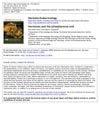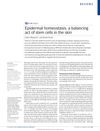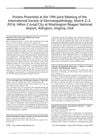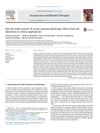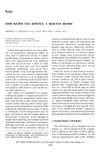Histopathological Findings and Proliferative Activity of Canine Sebaceous Gland Tumors with a Predominant Reserve Cell Population
February 2015
in “
Journal of Comparative Pathology
”
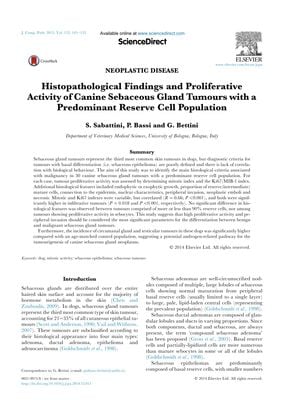
TLDR High proliferative activity and peripheral invasion indicate malignancy in canine sebaceous gland tumors; the term 'epithelioma' should be updated for clarity.
The study investigated 30 canine sebaceous gland tumors to determine histological criteria for malignancy, focusing on tumors with a predominant reserve cell population. It was found that both mitotic and Ki67 indexes, which measure tumor proliferative activity, were significantly higher in infiltrative tumors and correlated with each other. The study also observed a higher incidence of circumanal gland and testicular tumors in the dogs, suggesting a potential androgen-related pathway for tumorigenesis. Over an average follow-up of 754 days, three dogs were euthanized due to systemic metastases. The study concluded that high proliferative activity and peripheral invasion are key indicators of malignancy in these tumors, while the percentage of reserve cells and proliferative activity in mature sebocytes were not. The findings support the use of the Ki67 index as a prognostic marker and suggest that the term 'epithelioma' be replaced with more descriptive terms indicating tumor behavior.
